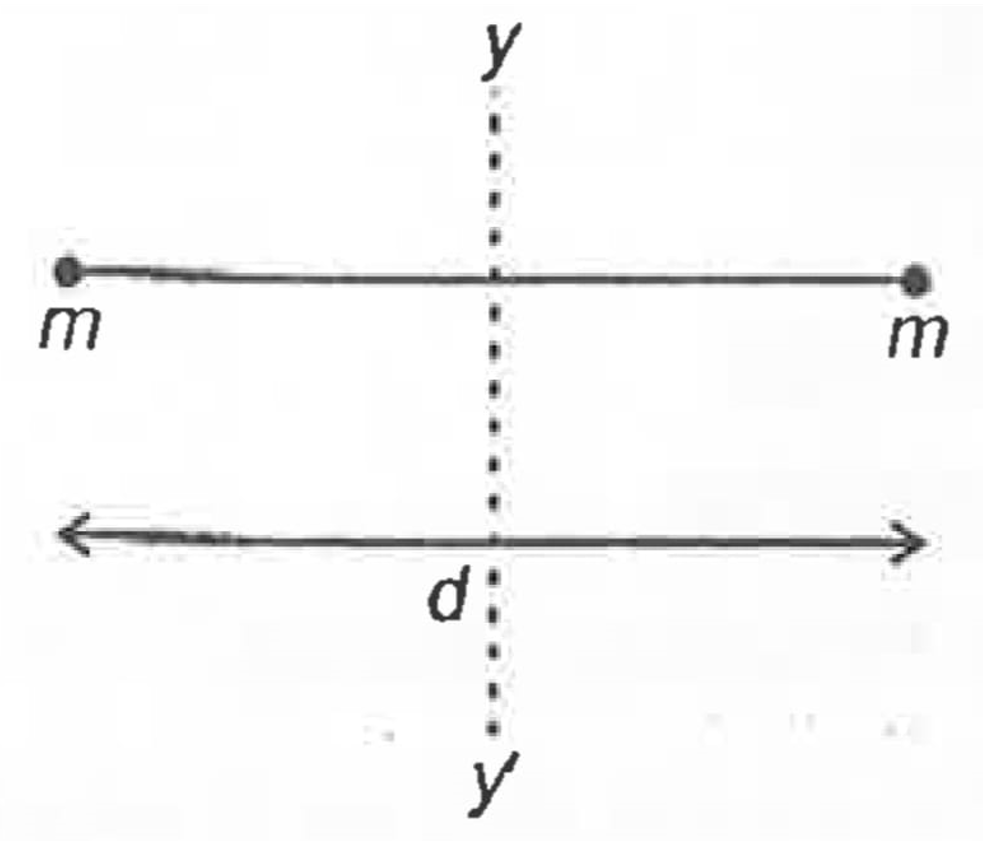A body of mass 50 g is revolving about an axis in a circular path. The distance of the centre of mass of the body from the axis of rotation is 50 cm. Find the moment of inertia of the body.
Step by step video & image solution for A body of mass 50 g is revolving about an axis in a circular path. The distance of the centre of mass of the body from the axis of rotation is 50 cm. Find the moment of inertia of the body. by Physics experts to help you in doubts & scoring excellent marks in Class 11 exams.
Topper's Solved these Questions
- BOOK - SL ARORACHAPTER - ROTATIONAL MOTIONEXERCISE - Problem24videos
ROTATIONAL MOTION
- BOOK - SL ARORACHAPTER - ROTATIONAL MOTIONEXERCISE - Problem for self practice90videos
ROTATIONAL MOTION
- BOOK - SL ARORACHAPTER - PROPERTIES OF SOLIDSEXERCISE - All Questions97videos
PROPERTIES OF SOLIDS
- BOOK - SL ARORACHAPTER - System of particles & rotational MotionEXERCISE - EXERCISE353videos
System of particles & rotational Motion
Similar Questions
Knowledge Check
- Question 1 - Select One
The mass of a body cannot be considered to be concentrated at the centre of mass of the body for the purpose of computing its moment of inertia.
For then the moment of inertia of every body about an axis passing through its centre of mass would be zero.AStatement-1 is True, Statement-2 is Ture , Statement -2 is a correct explanation for statement -1.BStatement-1 is True, Statement-2 is True , Statement-2 is NOT a correct explanation fro Statement -1.CStatement-1 is True, Statement-2 is False.DStatement-1 is False, Statement-2 is True. - Question 2 - Select One
The moment of inertia of a body about a given axis of rotation depends upon :-
Athe distribution of massBdistance of particle of body from the axis of rotationCshape of the bodyDall of the above2 - Question 3 - Select One
Consider three bodies : a ring, a disc and a sphere. All the bodies have same mass and radius. All rotate about their axis through their respective centre of mass and perpendicular to the plane. What is the ratio of moment of inertia ?
Athe body which is having greater moment of inertia will have more angular accelerationBthe body which is having greater moment of inertia will have lower angular accelerationCboth will accelerate with same magnitudeDNone of these
A body of mass 200g oscillates about a horizontal axis at a distance of 20cm from its centre of gravity . If the length of the equivalent simple pendulum is 35cm, find its moment of inertia about the point of suspension.
View SolutionA body of mass 0.2 kg oscillates about a horizental axis at a distance 20 cm from its centre ofr gravity. Ifd the length of the equivalent simple pendulem be 0.35 m, find the moment of inertia about the axis of suspension.
View SolutionA body of mass 2 kg is revolving in a horizontal circle of radius 2 m at the rate of 2 revolutions per second. Determine (i) moment of inertia of the body and (ii) the rotational kinetic energy of the body.
View SolutionAbout which axis would the moment of inertia of a body be minimum ?
View SolutionA rigid body of mass m rotates with angular velocity ω about an axis at a distance a from the centre of mass G. The radius of gyration about a parallel axis through G is k. The kinetic energy of rotation of the body is
View Solution


